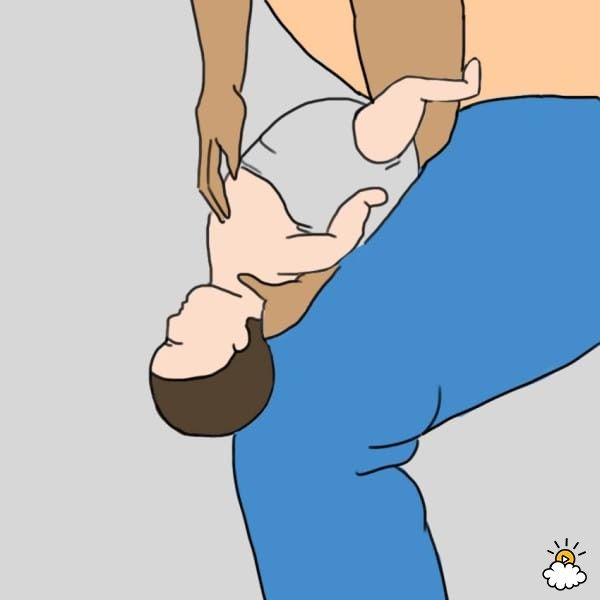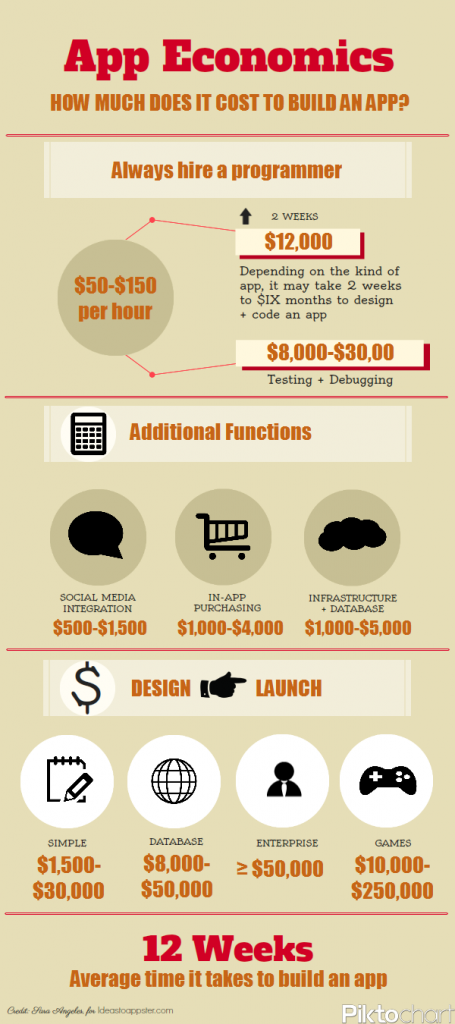How old should a baby be for tummy time
When to Start and How to Do It
With all the focus on putting baby to sleep on their back, it’s easy to forget that tummy time is actually pretty important. Though it’s tough to see at first, all those little wiggles and attempts at half-lifts are contributing to baby’s development in major ways, preventing flat spots from forming on the back of their head (a side effect of all that time on their back) and preparing them for a few down-the-road milestones like rolling over and crawling. But if you’re new to this whole parenting gig, you might be wondering what exactly tummy time is and how it works. Don’t worry, we’re here to help with answers to all the questions you didn’t even know you had. So at what age should you start tummy time? And how often does baby need to do it? Read on to learn everything you need to know about the important developmental exercise known as tummy time.
In this article:
What is tummy time?
Benefits of tummy time
When to start tummy time
How long should tummy time last?
How to do tummy time
Tummy time tips
What Is Tummy Time?
When we talk about tummy time, what exactly do we mean? Suffice to say, tummy time is exactly what it sounds like—time that baby spends on their stomach while awake and supervised. Placing baby on their tummy encourages them to lift their head, which helps strengthen their head, neck and shoulder muscles and boost motor skills.
Benefits of Tummy Time
We know, it’s not easy to make baby do an activity they’re less than thrilled about. But trust us, tummy time is worth it. In addition to offering a sweet way for the two of you to bond, there are some major benefits of tummy time:
• Practice for milestones like rolling over, sitting upright and crawling
• Strengthens gross motor skills
• Engages lesser-used muscle groups
• Prevents plagiocephaly (aka flat head syndrome)
• Helps baby master head control
• Alleviates gas pain
• Exposes baby to a different environment
When to Start Tummy Time
At what age should you start tummy time? While there’s no prescription for exactly when to begin practicing tummy time, the American Academy of Pediatrics recommends parents get going on it early. In fact, babies born at full term with no health issues can start tummy time as soon as their first day home from the hospital—so long as you and your newborn are both awake and alert, and you or another caregiver are there to supervise.
Don’t be surprised if baby hates tummy time and those initial attempts are met with some resistance. “Babies usually don’t like it and get cranky about it,” says Michael McKenna, MD, a pediatrician at St. Vincent Medical Group in Zionsville, Indiana. “The first time, they might only be down there for a minute before they start screaming. It’s about getting them used to being in that position. You’ll probably have to start with short sessions and work your way up.”
How Long Should Tummy Time Last?
Now that you know when to start tummy time (the sooner, the better!), you may be wondering how long each practice session should last. A little bit of tummy time actually goes a long way. When it comes to newborn tummy time, aim for two to three sessions a day for three to five minutes at a time, ideally after a nap or diaper change and as part of playtime. “You can stop or take breaks in there if your baby is having a tough time,” says Ashanti Woods, MD, a pediatrician at Mercy Family Care Physicians in Baltimore, Maryland.
As baby gets older and begins to enjoy this “workout,” gradually ramp up the number and duration of tummy time sessions. Aim for around 20 to 30 minutes a day of baby tummy time by the time they’re 3 or 4 months old. Remember, it doesn’t have to happen in one long session. Keep the practice up until baby can roll over on their own, a feat many babies accomplish around 6 or 7 months of age. Even then, you may consider keeping tummy time practice a part of your regular routine; it’ll help them as they start learning to crawl.
How To Do Tummy Time
Like most exercises, tummy time is pretty straightforward. Here’s how to get started:
• Set-up a soft, safe space and lay baby down. A blanket or a tummy time mat on a firm, flat surface works well. The floor is an ideal spot, though you can also lay your infant tummy down on your stomach or chest or across your lap.
• If baby doesn’t respond to tummy time on their own, try to engage them. Seeing your face can be incentive enough for baby to try lifting their head from your body, but McKenna warns that sometimes this plan can backfire.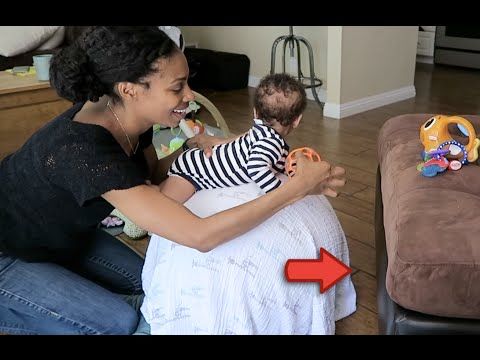 A sleep-deprived new parent (read: all of us!) might be tempted to snooze. Or, if you manage to stay awake, baby might not have incentive to lift their head off of your warm body and they could drift off to sleep.
A sleep-deprived new parent (read: all of us!) might be tempted to snooze. Or, if you manage to stay awake, baby might not have incentive to lift their head off of your warm body and they could drift off to sleep.
See how it goes and how baby responds to tummy time. You may need to play around with positioning. If, say, baby really can’t handle being on their stomach, consider laying them on their side. This AAP-recommended position has baby on a blanket, laying on their side, with a rolled-up towel behind their back and a rolled-up washcloth under their head for support (if needed). Bring both of baby’s arms in front of them and both legs forward, bending their knees for comfort. Be sure to roll them to the alternating side every 10 to 15 minutes.
Tummy Time Tips
In a perfect world, your infant will push up and move around on their own during tummy time. But chances are, they’ll need some sort of stimulation to stay engaged. Here are some tummy time moves and distraction to try:
-
Use special tummy time toys.
 Pull out one or two novel tummy time toys and place them just out of reach, so baby has to extend themselves to grab them. You can also try holding a brightly colored stuffed animal or shaking a rattle near baby’s face to distract them from the task at hand.
Pull out one or two novel tummy time toys and place them just out of reach, so baby has to extend themselves to grab them. You can also try holding a brightly colored stuffed animal or shaking a rattle near baby’s face to distract them from the task at hand. -
Use a mirror. Do you have an unbreakable baby mirror from a playmat or toy? Put this in front of baby’s face. They may enjoy seeing their reflection during tummy time.
-
Get in on the tummy time action. If your little one isn’t happy about exercising alone, you can join the activity. “Lay down there with your baby,” McKenna suggests. “Move their hands around, have them feel new things, read to them or put down different-colored blankets—something to keep it interesting for baby.” You can also enlist a sibling to help entertain baby.
-
Use your body. Tummy time on the floor might not be your baby’s thing for a while. If this is the case, you can use your own body as baby’s personal tummy time mat.
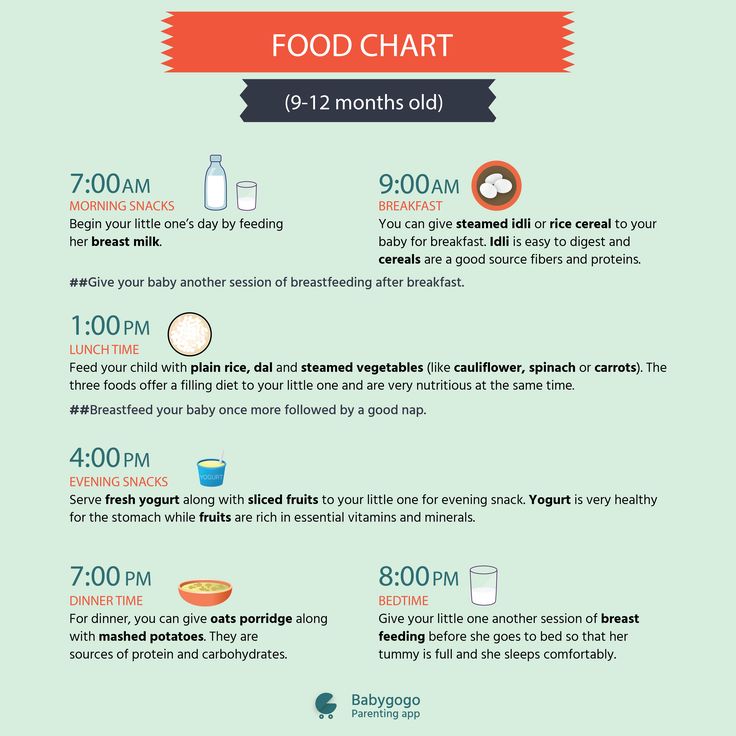 Place baby across your lap, belly down. Use your hand to rub their back or offer gentle, rhythmic pats. You can also try laying down on your back and placing baby tummy down on your belly.
Place baby across your lap, belly down. Use your hand to rub their back or offer gentle, rhythmic pats. You can also try laying down on your back and placing baby tummy down on your belly. -
Try a football hold. Hold baby like a football, balancing their tummy on your arm with their legs and arms on either side. Be sure to support their back and neck with your other hand. This is a good beginner option for babies who resist any and all tummy time.
-
Prop baby up. If baby doesn’t like being flat on their tummy, you can try propping them with a nursing pillow under their chest at first. This will hopefully get them used to the position, so that you can eventually (and gradually) remove any props. With or without a pillow, remember to always keep an eye on baby while they’re practicing tummy time.
What if baby still hates tummy time? Don’t stress—and don’t give up, Woods advises. “Like many things with children, it’s okay to step back, take a break and come back to tummy time,” he says. “Take a couple of days or a week off, and try again later. You’ll likely see success after you take a breather.” Also consider shortening sessions and spacing tummy time out throughout the day to make the task a little more bearable for baby. A little here and there all add up. “As long as they are doing some [tummy time], it will have some benefit,” McKenna points out.
“Take a couple of days or a week off, and try again later. You’ll likely see success after you take a breather.” Also consider shortening sessions and spacing tummy time out throughout the day to make the task a little more bearable for baby. A little here and there all add up. “As long as they are doing some [tummy time], it will have some benefit,” McKenna points out.
Incorporating tummy time into your daily routine with baby might feel daunting at first—especially if they fight the activity. Don’t put too much pressure on yourself or your little one right away. Gradually, they’ll get used to this position, and you’ll find a few creative ways to squeeze in some practice.
About the experts:
Michael McKenna, MD, a pediatrician at Ascension Medical Group in Zionsville, Indiana. He earned his medical degree at Indiana University School Of Medicine in St., Indianapolis.
Ashanti Woods, MD, a pediatrician at Mercy Family Care Physicians in Baltimore, Maryland. He earned his medical degree from Howard University College of Medicine in Washington, DC.
He earned his medical degree from Howard University College of Medicine in Washington, DC.
Please note: The Bump and the materials and information it contains are not intended to, and do not constitute, medical or other health advice or diagnosis and should not be used as such. You should always consult with a qualified physician or health professional about your specific circumstances.
Plus, more from The Bump:
What You Need to Know About Baby Growth Spurts
When Do Babies Start Talking?
Why Babies Get Clingy—And How to Cope
When to Start and How to Do It
With all the focus on putting baby to sleep on their back, it’s easy to forget that tummy time is actually pretty important. Though it’s tough to see at first, all those little wiggles and attempts at half-lifts are contributing to baby’s development in major ways, preventing flat spots from forming on the back of their head (a side effect of all that time on their back) and preparing them for a few down-the-road milestones like rolling over and crawling.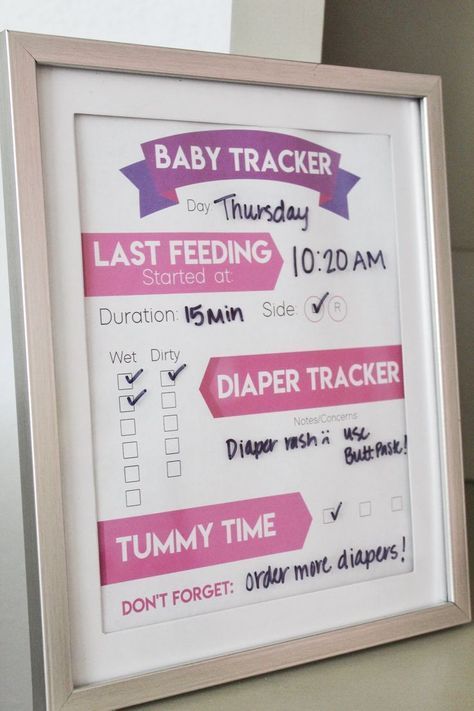 But if you’re new to this whole parenting gig, you might be wondering what exactly tummy time is and how it works. Don’t worry, we’re here to help with answers to all the questions you didn’t even know you had. So at what age should you start tummy time? And how often does baby need to do it? Read on to learn everything you need to know about the important developmental exercise known as tummy time.
But if you’re new to this whole parenting gig, you might be wondering what exactly tummy time is and how it works. Don’t worry, we’re here to help with answers to all the questions you didn’t even know you had. So at what age should you start tummy time? And how often does baby need to do it? Read on to learn everything you need to know about the important developmental exercise known as tummy time.
In this article:
What is tummy time?
Benefits of tummy time
When to start tummy time
How long should tummy time last?
How to do tummy time
Tummy time tips
What Is Tummy Time?
When we talk about tummy time, what exactly do we mean? Suffice to say, tummy time is exactly what it sounds like—time that baby spends on their stomach while awake and supervised. Placing baby on their tummy encourages them to lift their head, which helps strengthen their head, neck and shoulder muscles and boost motor skills.
Benefits of Tummy Time
We know, it’s not easy to make baby do an activity they’re less than thrilled about. But trust us, tummy time is worth it. In addition to offering a sweet way for the two of you to bond, there are some major benefits of tummy time:
But trust us, tummy time is worth it. In addition to offering a sweet way for the two of you to bond, there are some major benefits of tummy time:
• Practice for milestones like rolling over, sitting upright and crawling
• Strengthens gross motor skills
• Engages lesser-used muscle groups
• Prevents plagiocephaly (aka flat head syndrome)
• Helps baby master head control
• Alleviates gas pain
• Exposes baby to a different environment
When to Start Tummy Time
At what age should you start tummy time? While there’s no prescription for exactly when to begin practicing tummy time, the American Academy of Pediatrics recommends parents get going on it early. In fact, babies born at full term with no health issues can start tummy time as soon as their first day home from the hospital—so long as you and your newborn are both awake and alert, and you or another caregiver are there to supervise.
Don’t be surprised if baby hates tummy time and those initial attempts are met with some resistance. “Babies usually don’t like it and get cranky about it,” says Michael McKenna, MD, a pediatrician at St. Vincent Medical Group in Zionsville, Indiana. “The first time, they might only be down there for a minute before they start screaming. It’s about getting them used to being in that position. You’ll probably have to start with short sessions and work your way up.”
“Babies usually don’t like it and get cranky about it,” says Michael McKenna, MD, a pediatrician at St. Vincent Medical Group in Zionsville, Indiana. “The first time, they might only be down there for a minute before they start screaming. It’s about getting them used to being in that position. You’ll probably have to start with short sessions and work your way up.”
How Long Should Tummy Time Last?
Now that you know when to start tummy time (the sooner, the better!), you may be wondering how long each practice session should last. A little bit of tummy time actually goes a long way. When it comes to newborn tummy time, aim for two to three sessions a day for three to five minutes at a time, ideally after a nap or diaper change and as part of playtime. “You can stop or take breaks in there if your baby is having a tough time,” says Ashanti Woods, MD, a pediatrician at Mercy Family Care Physicians in Baltimore, Maryland.
As baby gets older and begins to enjoy this “workout,” gradually ramp up the number and duration of tummy time sessions. Aim for around 20 to 30 minutes a day of baby tummy time by the time they’re 3 or 4 months old. Remember, it doesn’t have to happen in one long session. Keep the practice up until baby can roll over on their own, a feat many babies accomplish around 6 or 7 months of age. Even then, you may consider keeping tummy time practice a part of your regular routine; it’ll help them as they start learning to crawl.
Aim for around 20 to 30 minutes a day of baby tummy time by the time they’re 3 or 4 months old. Remember, it doesn’t have to happen in one long session. Keep the practice up until baby can roll over on their own, a feat many babies accomplish around 6 or 7 months of age. Even then, you may consider keeping tummy time practice a part of your regular routine; it’ll help them as they start learning to crawl.
How To Do Tummy Time
Like most exercises, tummy time is pretty straightforward. Here’s how to get started:
• Set-up a soft, safe space and lay baby down. A blanket or a tummy time mat on a firm, flat surface works well. The floor is an ideal spot, though you can also lay your infant tummy down on your stomach or chest or across your lap.
• If baby doesn’t respond to tummy time on their own, try to engage them. Seeing your face can be incentive enough for baby to try lifting their head from your body, but McKenna warns that sometimes this plan can backfire. A sleep-deprived new parent (read: all of us!) might be tempted to snooze. Or, if you manage to stay awake, baby might not have incentive to lift their head off of your warm body and they could drift off to sleep.
Or, if you manage to stay awake, baby might not have incentive to lift their head off of your warm body and they could drift off to sleep.
See how it goes and how baby responds to tummy time. You may need to play around with positioning. If, say, baby really can’t handle being on their stomach, consider laying them on their side. This AAP-recommended position has baby on a blanket, laying on their side, with a rolled-up towel behind their back and a rolled-up washcloth under their head for support (if needed). Bring both of baby’s arms in front of them and both legs forward, bending their knees for comfort. Be sure to roll them to the alternating side every 10 to 15 minutes.
Tummy Time Tips
In a perfect world, your infant will push up and move around on their own during tummy time. But chances are, they’ll need some sort of stimulation to stay engaged. Here are some tummy time moves and distraction to try:
-
Use special tummy time toys. Pull out one or two novel tummy time toys and place them just out of reach, so baby has to extend themselves to grab them.
 You can also try holding a brightly colored stuffed animal or shaking a rattle near baby’s face to distract them from the task at hand.
You can also try holding a brightly colored stuffed animal or shaking a rattle near baby’s face to distract them from the task at hand. -
Use a mirror. Do you have an unbreakable baby mirror from a playmat or toy? Put this in front of baby’s face. They may enjoy seeing their reflection during tummy time.
-
Get in on the tummy time action. If your little one isn’t happy about exercising alone, you can join the activity. “Lay down there with your baby,” McKenna suggests. “Move their hands around, have them feel new things, read to them or put down different-colored blankets—something to keep it interesting for baby.” You can also enlist a sibling to help entertain baby.
-
Use your body. Tummy time on the floor might not be your baby’s thing for a while. If this is the case, you can use your own body as baby’s personal tummy time mat. Place baby across your lap, belly down. Use your hand to rub their back or offer gentle, rhythmic pats.
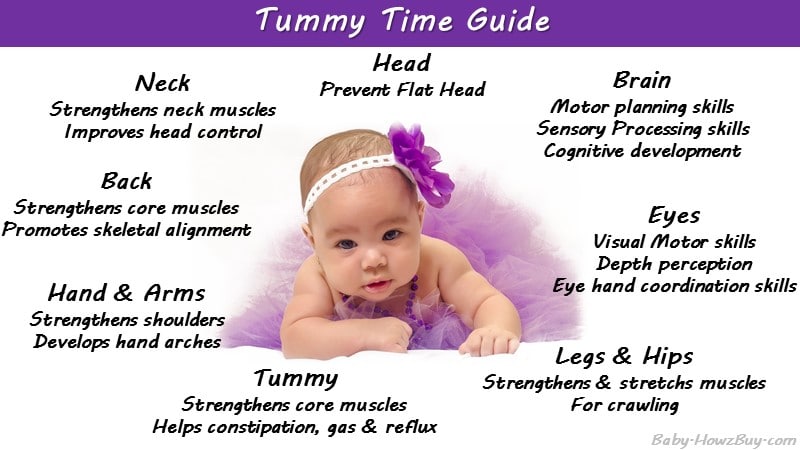 You can also try laying down on your back and placing baby tummy down on your belly.
You can also try laying down on your back and placing baby tummy down on your belly. -
Try a football hold. Hold baby like a football, balancing their tummy on your arm with their legs and arms on either side. Be sure to support their back and neck with your other hand. This is a good beginner option for babies who resist any and all tummy time.
-
Prop baby up. If baby doesn’t like being flat on their tummy, you can try propping them with a nursing pillow under their chest at first. This will hopefully get them used to the position, so that you can eventually (and gradually) remove any props. With or without a pillow, remember to always keep an eye on baby while they’re practicing tummy time.
What if baby still hates tummy time? Don’t stress—and don’t give up, Woods advises. “Like many things with children, it’s okay to step back, take a break and come back to tummy time,” he says. “Take a couple of days or a week off, and try again later.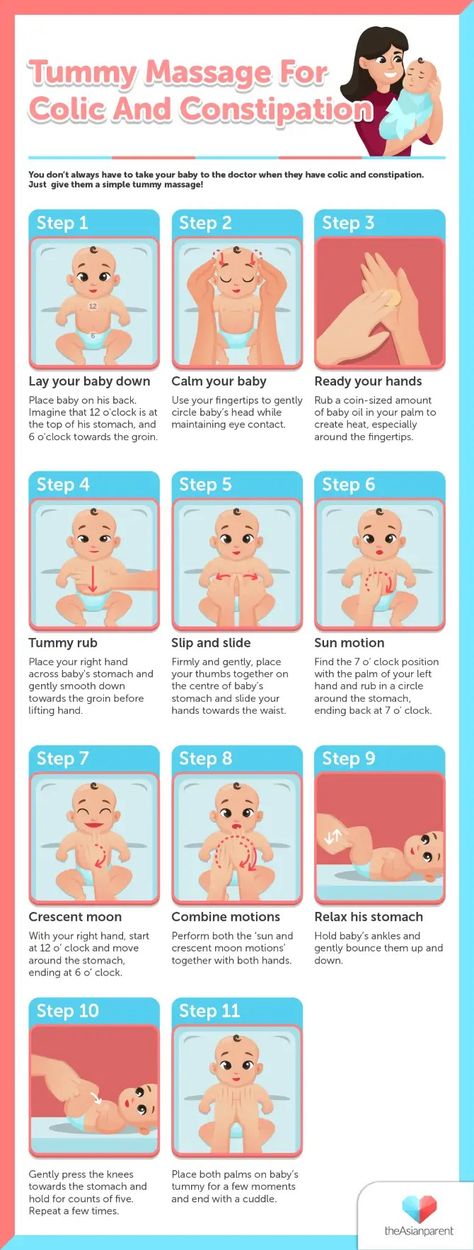 You’ll likely see success after you take a breather.” Also consider shortening sessions and spacing tummy time out throughout the day to make the task a little more bearable for baby. A little here and there all add up. “As long as they are doing some [tummy time], it will have some benefit,” McKenna points out.
You’ll likely see success after you take a breather.” Also consider shortening sessions and spacing tummy time out throughout the day to make the task a little more bearable for baby. A little here and there all add up. “As long as they are doing some [tummy time], it will have some benefit,” McKenna points out.
Incorporating tummy time into your daily routine with baby might feel daunting at first—especially if they fight the activity. Don’t put too much pressure on yourself or your little one right away. Gradually, they’ll get used to this position, and you’ll find a few creative ways to squeeze in some practice.
About the experts:
Michael McKenna, MD, a pediatrician at Ascension Medical Group in Zionsville, Indiana. He earned his medical degree at Indiana University School Of Medicine in St., Indianapolis.
Ashanti Woods, MD, a pediatrician at Mercy Family Care Physicians in Baltimore, Maryland. He earned his medical degree from Howard University College of Medicine in Washington, DC.
Please note: The Bump and the materials and information it contains are not intended to, and do not constitute, medical or other health advice or diagnosis and should not be used as such. You should always consult with a qualified physician or health professional about your specific circumstances.
Plus, more from The Bump:
What You Need to Know About Baby Growth Spurts
When Do Babies Start Talking?
Why Babies Get Clingy—And How to Cope
First year of life - Tarkvanem ‹ Movement - Tarkvanem
Main page / Movement / First year of life
Lateral navigation
1-3 months
Newborns love to be held, rocked, and enjoy physical closeness with family members. By the age of a few weeks, babies already need a variety of opportunities to explore the world and move around, both in the room and in the yard.
Let your baby be physically active. Babies are active when they can jerk their legs, turn around, crawl on all fours, grab various objects. Let them be on their stomach in a safe environment and under supervision. The tummy pose strengthens the child's muscles, develops body awareness, and also provides an opportunity to become familiar with the environment. In the first month of life, babies can stay on the stomach for a very short time, slowly you can prolong it. At first, you can lay the baby on your stomach on your knees or on your chest. By being face to face with your baby, or by placing a mirror or colorful toys near him, you can also encourage him to stay on his tummy. When the baby is on his stomach, you can stroke and massage him, talk to him and sing to him. It is also important that you do not leave the child alone on the stomach, but put them to sleep on their back.
Let them be on their stomach in a safe environment and under supervision. The tummy pose strengthens the child's muscles, develops body awareness, and also provides an opportunity to become familiar with the environment. In the first month of life, babies can stay on the stomach for a very short time, slowly you can prolong it. At first, you can lay the baby on your stomach on your knees or on your chest. By being face to face with your baby, or by placing a mirror or colorful toys near him, you can also encourage him to stay on his tummy. When the baby is on his stomach, you can stroke and massage him, talk to him and sing to him. It is also important that you do not leave the child alone on the stomach, but put them to sleep on their back.
4-6 months
Every child develops at their own pace. Typically, 3-month-old babies can keep their head centered, lying on their back, lying on their stomach, lifting their head and chest and leaning confidently on their elbows, and if they are seated, they hold their head firmly.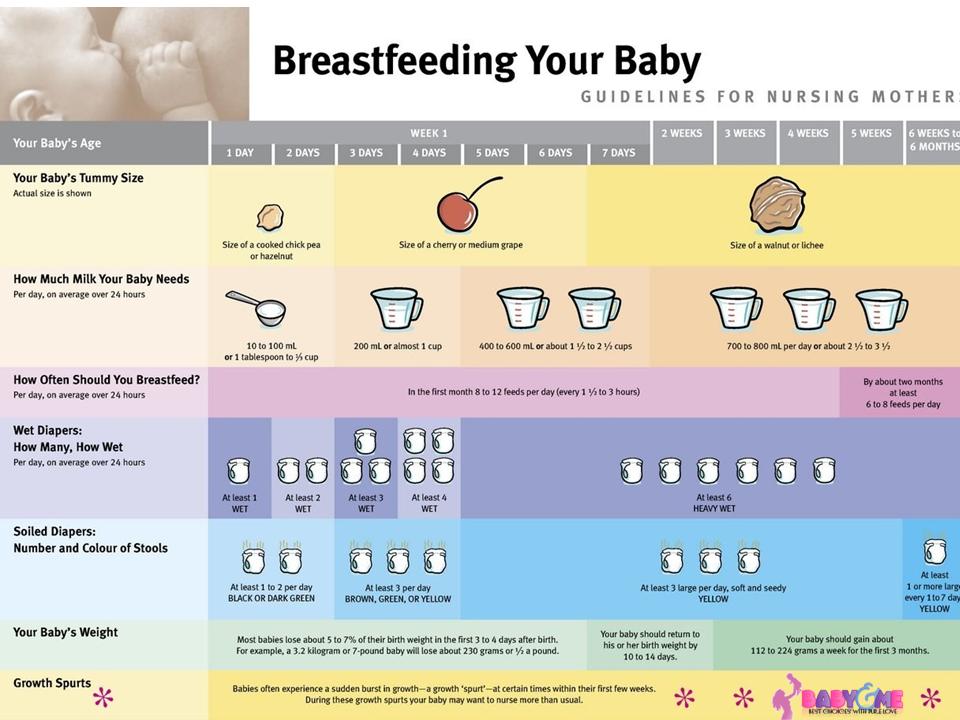 They hold and swing objects that are easy to grasp, such as rattles and rings. Lay your baby on your stomach several times a day. To do this, it is good to put a blanket on the floor so that the child can safely jerk his legs and arms, as well as train coups. For the development of coups and manual motor skills, various objects and toys can be laid out near the child, which it will be easy for him to grab and in order to get which he will need to roll over. Encourage your child to make different movements with his hands and rattle rattles to the music and different sounds.
They hold and swing objects that are easy to grasp, such as rattles and rings. Lay your baby on your stomach several times a day. To do this, it is good to put a blanket on the floor so that the child can safely jerk his legs and arms, as well as train coups. For the development of coups and manual motor skills, various objects and toys can be laid out near the child, which it will be easy for him to grab and in order to get which he will need to roll over. Encourage your child to make different movements with his hands and rattle rattles to the music and different sounds.
7-9 months
6-month-olds can usually roll over from back to stomach and vice versa, in the prone position they are already mobile, roll around their axis in both directions, try to crawl and try to grab objects out of their reach. Lying on their backs, they grab their legs with their hands, trying to put their toes in their mouths. If seated, children at this age are able to sit up on their own for a short time, using their arm to maintain balance.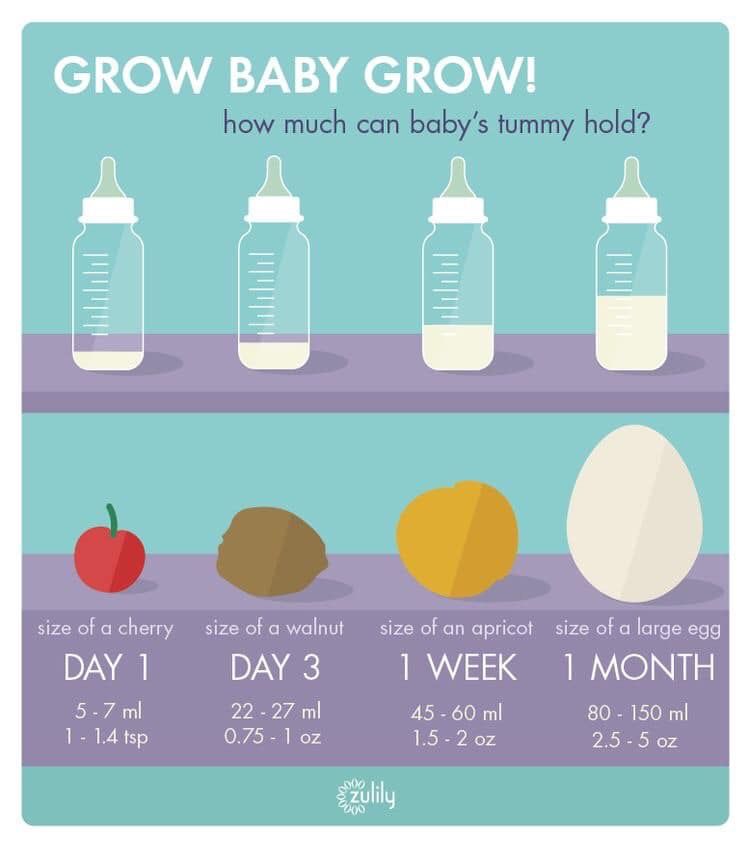 Leave the baby on the floor, on his back and on his stomach. Lay out toys in close proximity, encourage and motivate him to get them. Very well suited for this, for example, various rattles. You can make rattles yourself, for example, by putting some dry peas or beans in an empty and easy-to-grab plastic jar or box and closing it properly with a lid. Sit next to your child on the floor and help him sit up. Move a toy or ball in front of him, which will make him follow him with his eyes, bend down and grab him. You can also teach your child to stand up on their own by grasping for something. To do this, sit him next to some piece of furniture and encourage him to stand up, leaning on this object. Be sure to first make sure that the object is strong, does not roll over, that it does not have sharp corners.
Leave the baby on the floor, on his back and on his stomach. Lay out toys in close proximity, encourage and motivate him to get them. Very well suited for this, for example, various rattles. You can make rattles yourself, for example, by putting some dry peas or beans in an empty and easy-to-grab plastic jar or box and closing it properly with a lid. Sit next to your child on the floor and help him sit up. Move a toy or ball in front of him, which will make him follow him with his eyes, bend down and grab him. You can also teach your child to stand up on their own by grasping for something. To do this, sit him next to some piece of furniture and encourage him to stand up, leaning on this object. Be sure to first make sure that the object is strong, does not roll over, that it does not have sharp corners.
10-12 months
At 9 months, most babies can sit up and play with toys on their own. They can crawl, move on all fours, they can sit down on all fours. During this period, it is important to ensure that when sitting down, the child uses both sides of the body so that he can crawl and move around on all fours enough. Let the baby move as much as possible and discover the world on his own, but make sure that his environment is safe and secure. Make tunnels out of chairs and cardboard boxes that your child can climb or squeeze through. At this age, children like to play with real toys. Safe household items and utensils are suitable for this, such as wooden spoons and pots that can be fun to drum on.
Let the baby move as much as possible and discover the world on his own, but make sure that his environment is safe and secure. Make tunnels out of chairs and cardboard boxes that your child can climb or squeeze through. At this age, children like to play with real toys. Safe household items and utensils are suitable for this, such as wooden spoons and pots that can be fun to drum on.
If your child already knows how to stand with support, you can encourage them to walk with push or pull toys.
Quiet and calm play is also important, especially for the development of the child's fine motor skills. A good opportunity to develop the work of the fingers is, for example, collecting small objects or sticks in a basket. Looking at colored pictures and books helps to develop the work of the child's eye muscles.
By the end of the first year of life, the baby usually gets up and takes his first steps, some children by this time begin to walk independently. Learning to walk is not at all an easy task for a child; for this, he needs strong muscles, the ability to maintain balance, and coordinate the work of the whole body.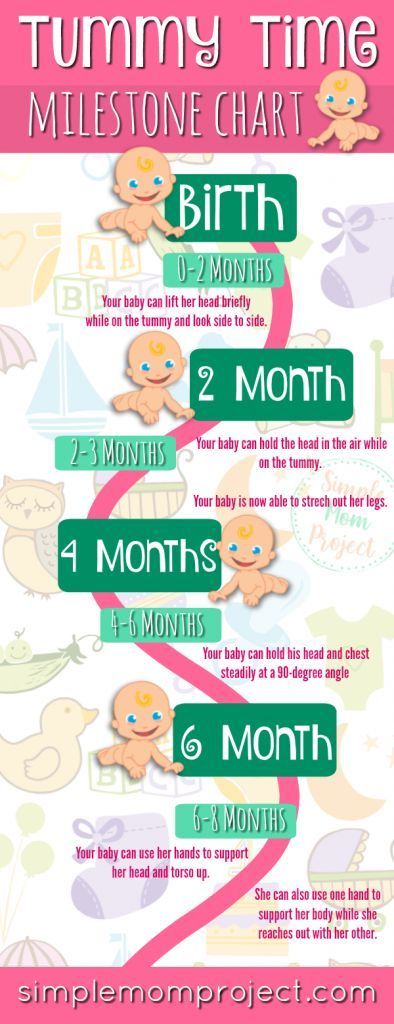 You can help him learn to walk by offering enough safe and open space to practice. A child who already knows how to walk can be let out to walk freely around the yard and push his stroller himself.
You can help him learn to walk by offering enough safe and open space to practice. A child who already knows how to walk can be let out to walk freely around the yard and push his stroller himself.
At this age, children are curious, very active and independent, so it is important to ensure that the environment is safe and that dangerous objects do not come to hand. Support them in their desire to open the world safely.
Advice for parents
- Lay your baby on your stomach from birth! First, for a couple of minutes several times a day, as the child grows older, extend this time, lay him on his stomach several times a day.
- Give your child the opportunity to be physically active, do not leave him for a long time in a seated position with support (safety chair, sitter, stroller, high chair, etc.)
- Make physical activity fun, enjoy it with the whole family! Learning together will give your child courage and open up opportunities to test and develop new skills.
 Play with it on the floor so your baby can practice rollovers, crawling, sitting, grabbing things, and more.
Play with it on the floor so your baby can practice rollovers, crawling, sitting, grabbing things, and more. - Use a variety of interesting toys to motivate your child to play and exercise.
- Play with your child in front of a mirror.
- Spend as much time as possible walking and playing outdoors.
- Bathe your child often, go swimming with him. Never leave a child in the bath unattended!
- Let your home become safe for a child!
Children under 2 years of age should not watch television or other screens. Parents here will be a great example. Watch TV and use the computer and gadgets only after the children have already gone to bed. Instead of being behind the screen, discover a real fascinating world with your child: play together on the floor, listen to music, sing, dance, explore nature.
What time do babies start crawling and how to help them
September 21, 2019LikbezAdvice
Six months, a year, never.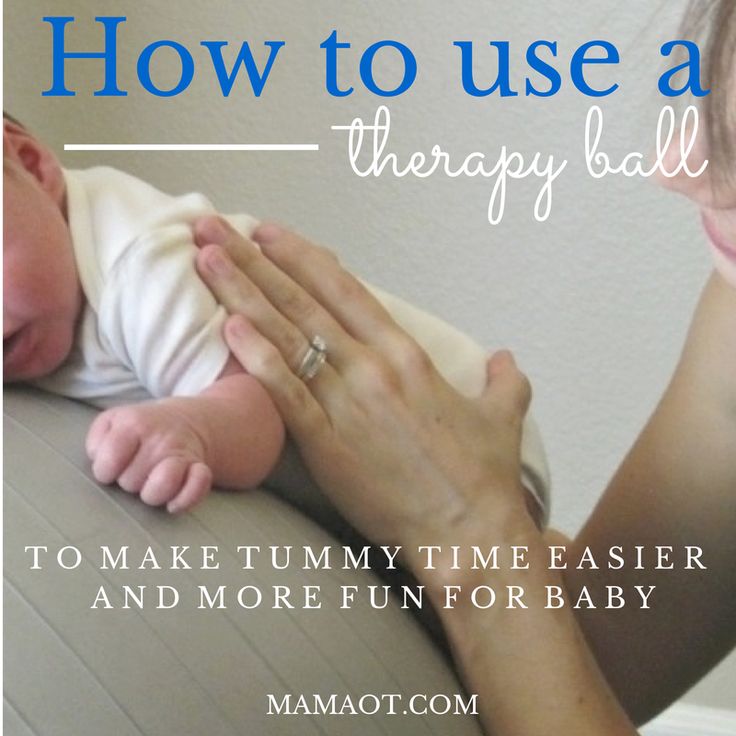 All answer options are correct.
All answer options are correct.
Share
0Crawling is a child's first huge step towards independence. And everyone is free to do it as they please.
What does it take for babies to start crawling? He must have sufficiently strong muscles of the back, neck, shoulders, arms and abdomen. While crawling, so-called binocular vision is involved: the ability to focus both eyes on the same object. Not the last role is played by the developed visual-spatial perception.
Rally McAllister
MD, MH, author of children's health books
Crawling helps children learn to navigate and train their memory. For example, he begins to understand that in order to get to the toy basket, you need to move around the table.
What time do babies start crawling
According to WHO's Motor Development Study: Windows of achievement for six gross motor development milestones, most babies crawl between 6 and 11 months of age. Approximately half of them master the movement on all fours by 8.3 months of age. A little more than 4% skip the crawling stage altogether, immediately stand on their feet and try to walk.
Approximately half of them master the movement on all fours by 8.3 months of age. A little more than 4% skip the crawling stage altogether, immediately stand on their feet and try to walk.
There are several reasons why some babies crawl earlier than others:
- Genetics. Yes, some are born to crawl almost from the cradle.
- Weight. Thin, well-muscled children predictably master difficult movements ahead of their chubbier peers.
- Time spent on the stomach. Babies who are more awake while lying on their stomachs start crawling earlier on average. They put more effort into getting up and looking around than if they were lying on their back. As a result, the muscles of the neck, arms and back necessary for crawling are strengthened.
Why don't all babies crawl the same way
Babies are not programmed to crawl in any particular way. They simply experiment with different modes of transportation and eventually settle on the most effective for themselves. And that's okay.
And that's okay.
Stomach
Approximately half of babies begin crawling by choosing one of the following styles or alternating between them.
1. On the bellies rivm.nl
The child leans on his elbows and pulls himself forward with one or the other handle, leaning slightly on his side.
2. Style
seal kidspot.com.auBaby pushes himself with both arms at the same time, rising slightly and then hitting his stomach on the floor.
3. Style
“frog” lovevery.comLying on his stomach, the child pushes off with his feet and “rows” with his legs, as if swimming like a frog.
On all fours
Babies usually go from belly to all fours fairly quickly. Which is quite understandable: try to crawl yourself at least a little like a plastuna or like a seal - and you will understand what an energy-consuming and even painful task it is.
Some children spare their bellies and immediately begin to crawl like an adult, that is, relying on four limbs. And here, too, options are possible.
1. Classic style
babycenter.comBaby walks with bent legs and outstretched arms.
2. Style
"crab" parenting.firstcry.comThe baby walks backwards, looking between his legs, or moves sideways.
3. Style
“bear” latinamoms.comSimilar to the classical method, only the child leans not on his knees, but on outstretched legs, raising his buttocks up.
4. Scooter style
youtube.comThe kid leans on his hands, bends one leg at the knee, and pushes off the other, as if riding a scooter.
Other options
Crawling on your stomach is difficult and unpleasant, but to move on all fours you need to develop a delicate sense of balance. Some children prefer to take the easier route.
1. Rolls
cherbebesleep.comThe child moves around the room by rolling from side to side.
2. Fidgeting
move2connect.com The baby fidgets on the buttocks and thus moves from one point to another, sometimes helping himself with his hands. According to the anthropologists of Crawling May Be Unnecessary for Normal Child Development, these movements most likely replaced crawling in our ancestors even before the development of agriculture and a sedentary lifestyle.
According to the anthropologists of Crawling May Be Unnecessary for Normal Child Development, these movements most likely replaced crawling in our ancestors even before the development of agriculture and a sedentary lifestyle.
This is exactly what happens to this day in the hunter-gatherer tribe of Papua New Guinea. There, babies up to a year spend 86% of the time sitting in a sling on their mother's back. Sometimes they are planted on the buttocks and almost never spread on the stomach. It is clear that in such conditions children cannot learn to crawl. But they don't suffer from it.
Is there any way to help the child
Perhaps the best thing parents can do is to stop paying attention to the achievements of neighbor children. And rejoice in the success of your child. And so that they are not overshadowed by troubles, take care of the safety of the baby in advance.
- Hide wires and plug sockets.
- Make sure all furniture is secure.
It’s better to temporarily remove something that is easy to overturn: a floor lamp, an ironing board, a light bookcase, houseplants in large pots.
- Keep souvenirs, money, cosmetics, medicines, cleaning products and detergents out of reach. In the best case, the baby will scatter, spill, break or break something. At worst, swallow it.
- Wash and dust floors daily.
- Regularly check the floor for coins, corks and other loose items. Remember that young explorers always put everything in their mouths.
- Cover a hard floor (parquet, tile) with a baby rug or blanket to reduce stress on your knees.
- Keep hot food and drinks away from the edge of the table.
- Make sure there are no piercing or cutting objects within the child's reach.
Of course, it is impossible to foresee everything. But better put your energy into organizing a friendly space and developing a healthy habit of not throwing things around. With the rest of the tasks, the baby can handle it on its own.




